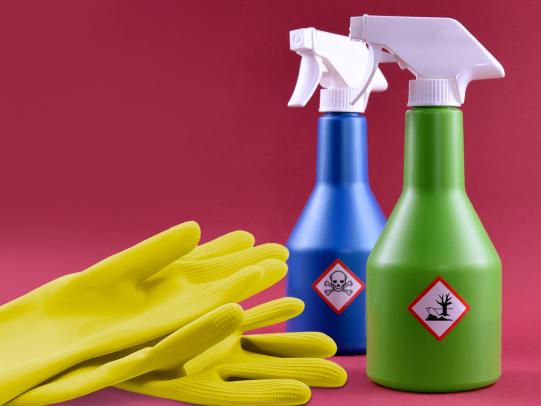Lea las etiquetas del producto y siga las instrucciones para maximizar los beneficios y minimizar los riesgos.

ACERCA DE LAS ETIQUETAS DE LOS PESTICIDAS
La foto muestra una selección de productos pesticidas en un estante de una tienda. La etiqueta de cada producto es única. Las etiquetas tienen información clave sobre cómo usar el producto. También tienen detalles importantes sobre cómo minimizar los riesgos para usted, su familia y el medio ambiente.
Las etiquetas son efectivamente contratos entre la Administración de Protección Ambiental de los EE. UU. (EPA), el fabricante y el usuario. Contienen información sobre el uso adecuado del producto. SIEMPRE lea y siga las instrucciones de la etiqueta.
¿Qué son los pesticidas?
Los pesticidas son productos diseñados para matar roedores, malezas, musgos, insectos, enfermedades de las plantas y babosas y caracoles. Los desinfectantes domésticos como la lejía y el amoníaco se consideran pesticidas. Los matapulgas también lo son.
¿Cuáles son sus riesgos?
Todos los productos pesticidas conllevan algún grado de riesgo para las personas y el medio ambiente.
El riesgo de los pesticidas depende de:
Exposición: a qué cantidad de sustancia química está expuesto.
Toxicidad: qué tan venenosa es la sustancia química.
Para obtener más información sobre los riesgos, consulte Entender los riesgos de los pesticidas (Centro Nacional de Información sobre Pesticidas).
¿POR QUÉ ES IMPORTANTE LEER LAS ETIQUETAS DE LOS PESTICIDAS?
Etiquetas de pesticidas:
- Contienen información detallada sobre cómo usar el producto de manera correcta y legal.
- Contienen información sobre los posibles peligros del producto. Contienen instrucciones que debe seguir en caso de intoxicación o derrame.
- Contienen información sobre el almacenamiento y la eliminación del producto.
- Proporcionan instrucciones para ayudarlo a minimizar el riesgo de exposición a pesticidas para usted, sus hijos, sus mascotas y la vida silvestre. Las instrucciones también lo ayudan a maximizar los beneficios.
PARA PREGUNTAS SOBRE PESTICIDAS
The National Pesticide Information Center (NPIC) can answer questions about pest control chemicals.
1-800-858-7378 or npic@ace.orst.edu
















